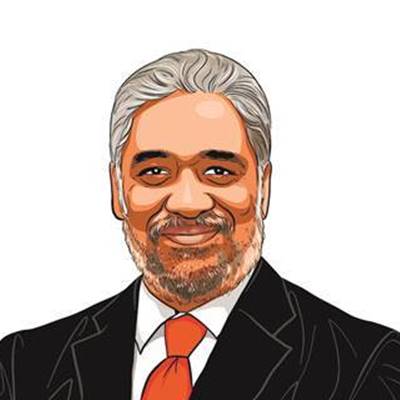Opinion Clinton and ASEAN
As she heads out to Bali and Indonesia after her India visit,US Secretary of State Hillary Clinton wades into the gathering conflict between Beijing and its Southeast Asian neighbours.
Clinton and ASEAN
As she heads out to Bali and Indonesia after her India visit,US Secretary of State Hillary Clinton wades into the gathering conflict between Beijing and its Southeast Asian neighbours. Every word that Clinton might say,and those that she wont,on the territorial disputes in the South China Sea will be scrutinised in the region for their implications for East Asian security and the future of China-US relations.
It was exactly a year ago,at the annual regional forum of the Association of Southeast Asian Nations in Hanoi,that Clinton declared Americas interest in the peaceful resolution of the disputes in the South China Sea and affirmed the right to freedom of navigation.
The emphasis on the word peaceful underlined the US commitment to protect its friends and allies in ASEAN,although Washington does not take sides in the maritime disputes between China and its Southeast Asian neighbours.
Since then,an angry and even more assertive China has warned the United States and other major powers to stay out of the South China Sea disputes. It cautioned Washington to consider the larger consequences of inserting itself into the South China Sea in opposition to Beijing.
China has warned its smaller neighbours against relying on the United States to solve their problems with Beijing. China has also flaunted its renewed military exchanges and security dialogue with the United States to remind its neighbours that China has more leverage with Washington than the ASEAN can ever hope to have.
The question now is whether Clinton will underline American determination to stand up against rising China or begin to walk back from the tough position she outlined last year. All others will begin to readjust their positions upon reading the signals that Clinton might put out.
Being east
The first hints of the US position could come when Clinton makes her only public speech during her current trip in Chennai on Wednesday.
Since President Barack Obamas visit to India last November,senior administration officials have repeatedly called on India to take a larger role in East Asia and the Pacific.
Many of the ASEAN countries,like Vietnam,have been seeking Indian support in their stand-off with China. Until now,India has been somewhat ambiguous. Delhis position on the South China Sea disputes might become a little clearer at the ARF gathering in Bali.
Losing Lumbini
While India wakes up to the geopolitics of the South China Sea,there is concern about Delhi losing ground again to Beijing in the Himalayas.
There is some heartburn within Delhis strategic community at the thought of China turning Lumbini,the birthplace of Buddha in Nepal,into a pilgrimage centre with world-class facilities like the Vatican and Mecca.
Making Lumbini more accessible,turning its environs attractive,and leveraging it for Nepals rapid economic development are big ideas that have been around for a long while. Their time may now have come,given the rise of China and Beijings capacity to think big and execute mega projects on short order.
But it certainly rankles that Delhi could not think expansively about the possibilities in Lumbini,which is not very far from Indias border with Nepal. But grand ideas have long ceased to win political traction in Delhi. It is not the Indian political class that came up with the idea of building a modern university on the ruins of the worlds oldest university in Nalanda. That idea came from Singapore in 2005.
There is no point blaming Beijing for taking up projects that India has not shown interest in. Indias lack of strategic imagination and Delhis neglect of its frontiers are reflected in the pathetic state of the nations infrastructure on the border with Nepal.
The Indian state stands exposed at one of main international gateways to Lumbini in the Utter Pradesh towns of Nautanwah and Sunauli. If Nepals Bhairawah town near Lumbini has a third-world feel,the Indian side of the border is a hellhole from the fourth world.
Instead of objecting to Chinese plans to develop Lumbini,India should focus on the development of its own territories facing Lumbini and more broadly,Nepal.
Could someone persuade Delhi to mobilise,say,$3 billion,the amount a Chinese foundation wants to get for the Lumbini project,on the transformation of the Indian border districts so rich with history and heritage?
May be someone can tell Rahul Gandhi,so determined to win the impending elections in Uttar Pradesh,that mega projects that touch Indias spiritual sensibility and create jobs might be political winners.
Could someone convince the Congress leadership that a bold agenda for borderland development could get votes as well improve national security?
The writer is a senior fellow at the Centre for Policy Research,Delhi





